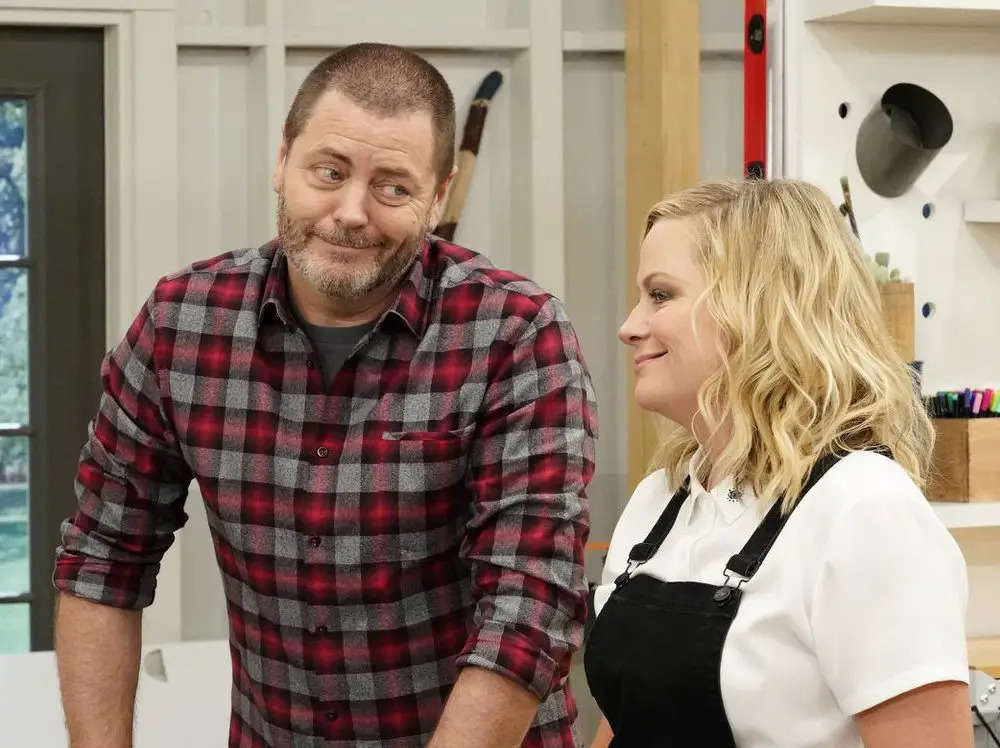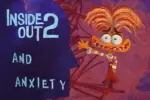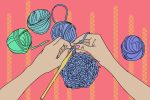A year and a half after its second season finale aired, NBC’s “Making It” returned for its third season in June. Once again, the hour-long crafting contest has set out to spotlight the work of 10 talented makers and emphasize the importance of artistic expression.
The Crafty Competition
While there is certainly no shortage of reality competition shows on television, “Making It” sets itself apart by aligning itself with the maker movement, which values the ability to create and design things using tools and raw materials.
In each episode, the makers are each tasked with making a Faster Craft and a Master Craft. The Faster Craft is usually completed within the first 15 minutes of the show and requires contestants to produce a small-scale item, such as a toy. The Master Craft is completed during the remainder of the show. This segment includes much larger and more dedicated tasks, such as constructing a fireplace mantle.
Season 3 has also introduced two new crafting challenges: the Mega Craft and the Procrasta Craft. The Mega Craft is similar to the Master Craft except it is completed throughout the entire duration of an episode. The Procrasta Craft, derived from the word “procrastination,” is typically introduced randomly in the middle of a Master or Mega Craft, and allots the makers one hour to create something, such as a gift for a fellow creator, on the spot.
These challenges and their broad themes allow lots of room for unrestrained creativity — makers may be assigned the task of making a family portrait, a toy that describes them best, a lending library of things they would like to share and even a front doorstep based on their hometown.
The competition takes place in a bright, colorful barn packed full of different crafting supplies. Makers can work with whatever they please, some choosing to stick to what they’ve mastered and others branching out to try new mediums. Throughout the show, makers utilize foam, wood, paper and even recycled materials for their projects
The makers’ final products are judged by Dayna Isom Johnson, a trend expert at Etsy, and Simon Doonan, a writer and fashion commentator. After each challenge, the winning maker is awarded a patch to fasten to their “Making It” apron. One contestant is also sent home each episode, much to the dismay of the show’s hosts.
The Humorous Hosts
“Making It” is hosted by Amy Poehler and Nick Offerman, both known for appearing alongside one another as Leslie Knope and Ron Swanson in NBC’s “Parks and Recreation.” The pair are exuberant hosts, quickly riffing off one another to make both the makers and the audience laugh. There’s also no shortage of jokes between the two — if one thing is for sure, puns are always intended on “Making It.”
Poehler and Offerman are not judges on the show, and instead spend most of their time interviewing contestants and commentating on their work in-person in the barn or in hilarious interstitials.
“A lot of these shows are about people who want to really perform, right? Who want to be a star, or who want danger and excitement,” said Poehler to The Hollywood Reporter. “But a lot of makers are introverts. They are used to spending time alone and not even used to working with others. We thought, who better to draw these introverted people out than Nick and I just standing next to them and poking them?”
Poehler also said that the minute she pitched the show, she knew she needed Offerman, a skilled maker himself, to be her co-host — a role that he gladly accepted.
“I don’t like mean television. I especially don’t like it when it involves real people, like reality shows that are designed to make people cry or cause them pain and we’re supposed to revel in that [as viewers]. It feels gross. I’d like to see that person get a hug right now,” Offerman told The A.V. Club. “And so when Amy pitched [Making It] to me, it literally sounded like it was a show that would do just that. It would encourage people to make things with their own hands and sink or swim.”
The Caring Contestants
“Making It” competitors come from all different walks of life and a wide variety of careers. Some are working in marketing, others in architecture, taxidermy and even biochemistry. Their craft specializations vary from miniatures to murals to sculpting. The vast differences in the final products are always fun to see, truly showcasing what a wide range of skills the makers possess.
Despite there being a $100,000 prize at stake, every maker on the show is rooting for the others to succeed, often praising one another competitor for jobs well done and offering encouraging words in moments of doubt. Everyone is happy just to celebrate their shared love for crafting.
“I’m not here for competition, I’m here to make friends,” said Chelsea Anderson in the first episode of the season, setting the tone for the coming installments.
The makers are also always game to assist one another with their craft if they have extra time, never wanting to see someone fall short of their creative vision. “If I have an extra 10 minutes after I finish my piece and someone needs help gluing something, you run and glue it! Everyone is invested in each other. When someone is eliminated, everyone cries. The only real pressure comes from yourself and the clock,” said Season 3 maker Becca Barnet to the Charleston City Paper.
“Making It” also grants makers the space to be open about their individual struggles, allowing them to convey their feelings through art pieces and taped confessionals. These powerful and personal moments of expression lead to many sentimental moments on the show, deepening both the meaning behind art pieces as well as the viewers’ connections with the artists themselves.
Creativity Is Crucial
In a world full of messy, drama-fueled reality television competitions, the zany atmosphere of “Making It” is a breath of fresh air. There’s a lot that can be learned from the show, whether it’s a new environmentally friendly craft you can DIY at home or a piece of valuable advice about how to get in touch with your own imaginative side.
By fully embracing its innovative makers and their one-of-kind designs, “Making It” has successfully built an environment in which creatives can thrive. It will surely be a bright spot on your weekly watchlist.

















